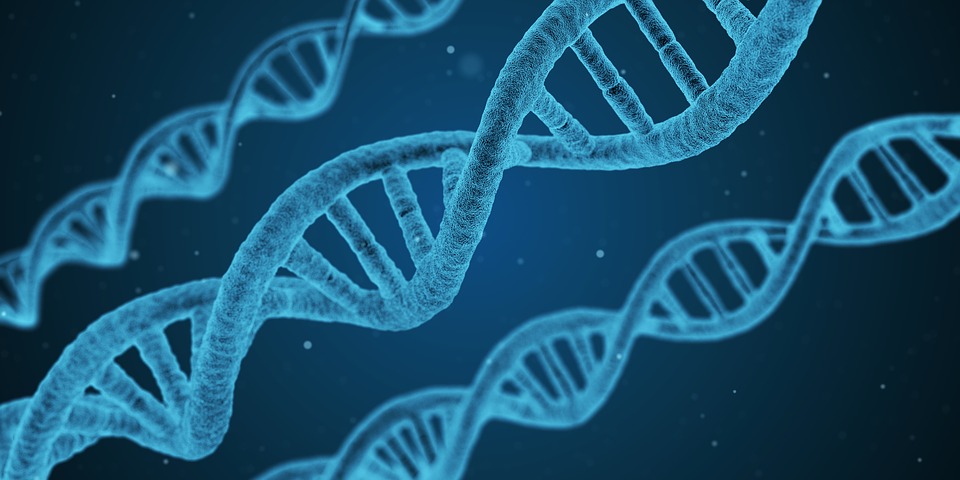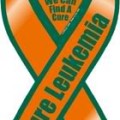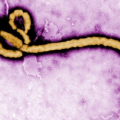Gene therapy refers to the alteration of the existing genes to cure diseases. This is done by inserting genetically modified or normal genetic material into the cell’s genome to correct the abnormality.
Example of a gene abnormality is the brain tumor. The reason behind the formation of this tumor is the rapid and abnormal growth of the cells due to a mutation in a gene. Gene therapy uses a harmless virus to insert a normal gene into the target cells.
 Some other theoretical uses of gene therapy include treatment of detrimental conditions such as hemophilia, cystic fibrosis, muscular dystrophy, and sickle cell anemia. There are three basic approaches used in gene therapy:
Some other theoretical uses of gene therapy include treatment of detrimental conditions such as hemophilia, cystic fibrosis, muscular dystrophy, and sickle cell anemia. There are three basic approaches used in gene therapy:
- Replacing a mutated gene (the gene which causes the disease) with a healthy copy of the gene
- Deactivating or “knocking out” a mutated gene that does not function properly
- Introducing a new gene into the human body to help fight against certain diseases
The following sections explore some of the most popular gene therapy approaches and how is it used for the treatment of specific disease.
Types of Gene Therapy
Gene therapy is of two types depending on the type of cells being treated:
Somatic gene therapy: This type of gene therapy involves the transfer of DNA into the cells that do not produce eggs or sperms. With this type of therapy, the only person whose cells are altered will be affected. The effects will not be passed on to the patient’s children.
Germline gene therapy: This type of gene therapy involves the transfer of DNA to the cells that produce eggs and sperms. The effects of this therapy will be passed on to the patient’s children and further generations.
Gene Therapy Techniques
Gene Augmentation Therapy
This technique is used for the treatment of diseases, which are caused by a mutation that stops a gene from producing a functional product such as a protein. In this therapy, DNA containing a functional copy of the lost gene is added back into the target cell. The new gene produces the functional protein, which was not being produced earlier. For example, this technique can be used for the treatment of cystic fibrosis by introducing a functional copy of the gene to correct the disease.
Gene Inhibition Therapy
This gene therapy technique is used for treating diseases due to abnormal gene activity including certain infectious diseases, cancer, and inherited diseases. In this technique, a gene is introduced whose functional protein will either inhibit the expression of another gene or interfere with the activity of the product of another gene.
The main aim of this technique is to eliminate the activity of the gene that causes the growth of diseased cells. For example, cancer is caused by overexpression of oncogenes (genes which cause cancer). So, by the elimination of the activity of such oncogenes by gene inhibition therapy, further cell growth, and cancer can be treated or prevented. Gene therapy in cancer has advanced a lot in the last few years.
Killing Specific Cells
This type of gene therapy is used for diseases such as cancer. It works by the destruction of certain groups of cells. A DNA is inserted into the diseased cells that cause them to die. This is done by inserting the DNA that contains a “suicide gene” and produces a highly toxic product that kills the diseased cell. It also works by inserting DNA, which produces a protein that marks the cells so that the diseased cells are attacked by the body’s own immune system. It is important to target DNA properly to avoid the death of normally functioning cells.
How does gene therapy work?
Gene therapy works by introducing or inserting a gene with the use of carriers known as vectors. Most of the times, the vectors used are viruses because they can deliver the new gene by entering the cell.
These viruses are modified so that they do not cause any disease when introduced in patients. Some examples of viral vectors used are DNA virus, retrovirus, and adenovirus. This vector can be either directly injected or given intravenously into a specific tissue inside the body, where it can be taken up by the cells. This is known as in situ somatic gene therapy.
Another way is to take a sample of the patient’s cells and expose them to the vector in a laboratory setting. The cells containing the vector are put back into the patient’s body. This is known as ex vivo somatic gene therapy. If the treatment becomes successful, the newly delivered gene by the vector will start making a functional protein.
Potential Applications of Gene Therapy in Medicine
Research is being carried out to find out the potential applications of gene therapy in the treatment of a number of diseases such as cancer, infectious diseases, cardiac diseases, neurological disorders and inherited conditions.
Gene Therapy in Cancer Treatment
Gene therapy techniques used against cancer include the introduction of tumor suppressor genes, the introduction of genes that cause apoptosis of cells (cause them to die), the introduction of genes which inhibit tumor angiogenesis, genes which code for an enzyme to convert prodrugs to active drugs and immunotherapy.
Gene therapy is being tested in clinical trials for cancers such as glioblastoma, metastatic melanoma, head and neck cancer, prostate cancer, and colorectal cancer. Cancers such as melanomas are highly sensitive to immunotherapy and hence gene therapy vaccines are under development for such cancer.
Some gene therapies are being developed to target mutated genes in cancer patients, an example of which is the use of p53 gene for the treatment of neck and head cancer.
Gene Therapy in Neurological Disorders Treatment
Examples of the neurological disorder that can be treated with gene therapy include Parkinson’s disease, Alzheimer’s disease, and motor neuron disease. ProSavin is currently under trial for the treatment of Parkinson’s disease which is caused by the deficiency of dopamine in the brain.
ProSavin delivers genes that encode for enzymes required for dopamine synthesis in the brain through a lentivirus vector. The aim of this gene therapy is to start the production of dopamine and restore its levels in the brain. ProSavin is under Phase I and Phase II clinical trials and has shown some clinical efficacy. Further trials are being conducted to analyze the safety and efficacy of higher doses of ProSavin.
Gene Therapy in Infectious Disease Treatment
Gene therapy vaccines are currently being developed and tested for treating infectious diseases such as tuberculosis, malaria, HIV, and influenza. A genetically modified vaccine comprising a recombinant fowlpox virus and a recombinant MVA virus (each containing tuberculosis antigen) is being tested for treatment of tuberculosis.
A Phase II study of gene therapy is being conducted in 74 patients with HIV-1 infection. The patients are being given an anti-HIV ribozyme (OZI) or placebo. Results have shown reduced viral load in patients receiving OZI as compared to placebo. Such kind of therapeutic vaccines can make it possible to preserve the immune system and reduce the need for lifelong treatment with antiretroviral drugs in patients with HIV.
Gene Therapy in Inherited Disorders
In patients with inherited disorders, gene therapy can be used to replace a defective gene or missing gene, or start the expression of a missing biological factor or enzyme or protein. In patients with Hemophilia, therapies to deliver genes that express the missing factors VIII and IX could be designed. With such a treatment, individuals with hemophilia will no longer need injections of exogenous clotting factors. Research is ongoing with the use of adeno-associated virus and lentivirus vectors. Another inherited disorder, cystic fibrosis, is caused by a mutation in the gene that encodes for a cellular protein called “cystic fibrosis transmembrane conductance regulator” (CFTR).
This mutation causes the abnormal transportation of ions in lungs and other cells. Researchers have cloned the CFTR gene and are now developing therapies to enable the expression of CFTR. Non-viral vectors are being tested to deliver gene therapy locally into the lungs through a nebulizer.
Gene Therapy in Cardiac Disease Treatment
Gene therapy is currently being investigated to target angiogenesis (formation of new blood vessels) during cardiac surgery and to improve calcium-handling mechanisms in heart failure.
Challenges and Future Perspective
The clinical application of gene therapy has shown promising results in the first phases of clinical trials. These early phase results suggest such trials would further be continued to correct the abnormalities or diseases caused by gene mutations.
Some challenges in the path of gene therapy are delivering the gene into the right place and activating it, avoiding immune response against the inserted genes, and making sure that the new gene does not disrupt the functioning of other genes.
Scientists and researchers are working hard to overcome these challenges and hope that gene therapy and modification will prove to be a cure for many diseases and successful clinical trials will create new opportunities.


 (6 votes, average: 4.33 out of 5)
(6 votes, average: 4.33 out of 5)









